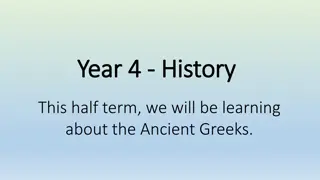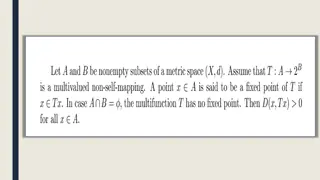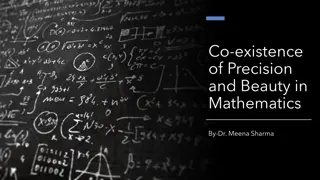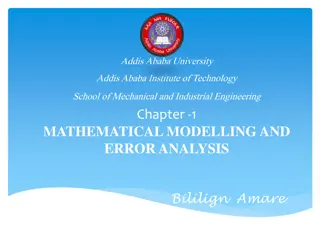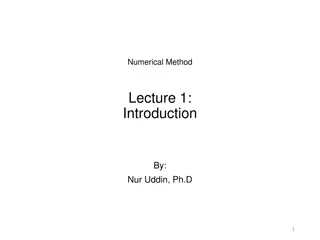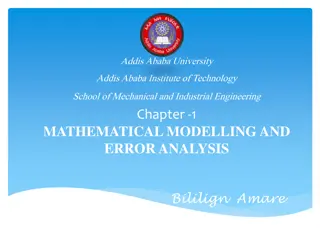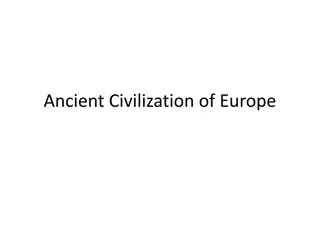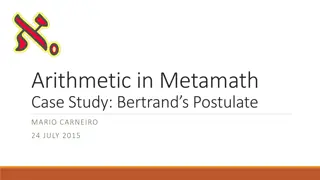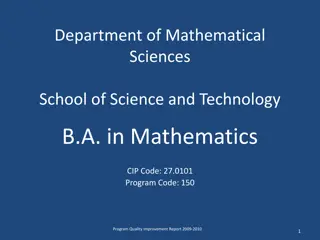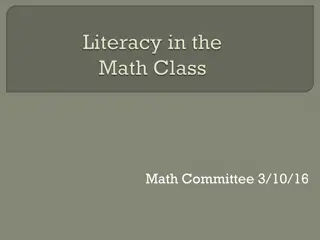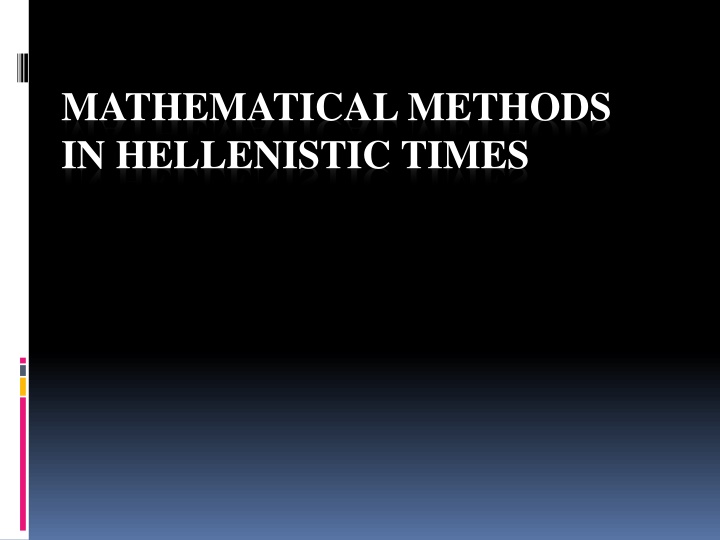
Mathematical Methods in Hellenistic Times: Achievements of Eudoxus, Apollonius, and Hipparchus
Discover the significant contributions of Eudoxus, Apollonius, and Hipparchus in Hellenistic mathematics, including advancements in astronomy, trigonometry, and geometric concepts. Explore the innovations that laid the foundation for modern mathematical principles.
Uploaded on | 1 Views
Download Presentation

Please find below an Image/Link to download the presentation.
The content on the website is provided AS IS for your information and personal use only. It may not be sold, licensed, or shared on other websites without obtaining consent from the author. If you encounter any issues during the download, it is possible that the publisher has removed the file from their server.
You are allowed to download the files provided on this website for personal or commercial use, subject to the condition that they are used lawfully. All files are the property of their respective owners.
The content on the website is provided AS IS for your information and personal use only. It may not be sold, licensed, or shared on other websites without obtaining consent from the author.
E N D
Presentation Transcript
MATHEMATICAL METHODS IN HELLENISTIC TIMES
The Hellenistic Period In this brief section, we show what type of problems mathematicians solved, and the extent of Greek Mathematics before the collapse of the mathematical world in about 400 C.E.
EUDOXUS He is famous in his works in ratios and methods of exhaustion. He is responsible in turning the astronomy into a mathematical science. He is the inventor of the two-sphere model , the modifications for the various motions of the sun, moon and planets.
APOLLONIUS He proposed the following solution: - Place the center of the sun s orbit at a point (called the eccenter) displayed away from the earth. If the sun moves uniformly around the new circle (called the deferent circle), an observer on earth will see more than a quarter of the circle against the spring quadrant (the upper quadrant (the upper left). The distance of ED or better the ratio of ED to DS is known as the eccentricity of the deferent. right) than the summer
HIPPARCHUS AND THE BEGINNING OF TRIGONOMETRY He planetary system for the stellar sphere, the tabulation of trigonometric ratios. carried out numerous introduced observations a of positions, coordinate System Coordinate - To deal with the positions of the stars and planets, one needs both a unit of measure for arcs and angles, as well as, a method of specifying where a particular body is located on the celestial sphere.
He adopted the division of the circumference of the circle into 360 parts (degrees), along with the sexagisimal division of degrees into minutes and seconds. He also used arcs of 1/24 of a circle (steps) and 1/48 of a circle (half-steps). Babylonians first introduced coordinates into the sky is also known as the Ecliptic System. The coordinate along the ecliptic is called the longitude. The coordinate perpendicular is called the latitude.
The trigonometry was the chord subtending a given arc (or central angle) in a circle of fixed radius. basic element in Hipparchus
Hipparchus used the same measure for the radius of the circle. circumference = 2 R, the sexagisimal approximation 3;8,30 He calculated the radius R as 60 x 360/ 2 = 6,0,0/6;17 = 57,18 = 3438 In a circle of radius, the measure of an angle (length cut-off on the circumference divided by the radius) equals its radian measure.
To calculate the table of chords, he began with a 60 angle. Crd( ) = Crd (60) = 3438 = 57,18 90 angle Chord is equal to R 2 = 4862 = 81, 2 To calculate of the other angles, he used two geometric results, crd (180- ) = (2R)^2 crd^2( )
PTOLEMY AND THE ALMAGEST Claudius Ptolemy - He made numerous observations of the heavens from locations near Alexandria and wrote several important books. - Mathematiki Syntaxis (Mathematical Collection), a work in 13 books that contained a complete mathematical description of the Greek model of the universe with parameters for the various motions of the sun, moon and planets.
Chords Tables - To construct the tables of chords of all arcs from 1/2 to 180 (intervals of 1/2 ) he took R = 60 First calculation established the chord of 36 namely, the length of decagon inscribed in a circle.
ROMAN MATHEMATICS Cicero admitted that Romans were not interested in Mathematics. Vitruvius - He wrote the book On Architecture , architects needed comprehensive liberal education (draftsmanship to astronomy). - Geometry offers many aids to architecture.
Lucius Columella - Roman Gentleman Farmer - He wrote that one deals with fields needs to be able to work out areas. Basic Formulas (area of squares, rectangles, triangles, circles) including the use of (1/3 + 1/10) s^2 for the area of triangle of side s, 22/7 = and A = (b + h)h + 1/14 (D/2)^2 for the area of a circle segment of base b and height h.

